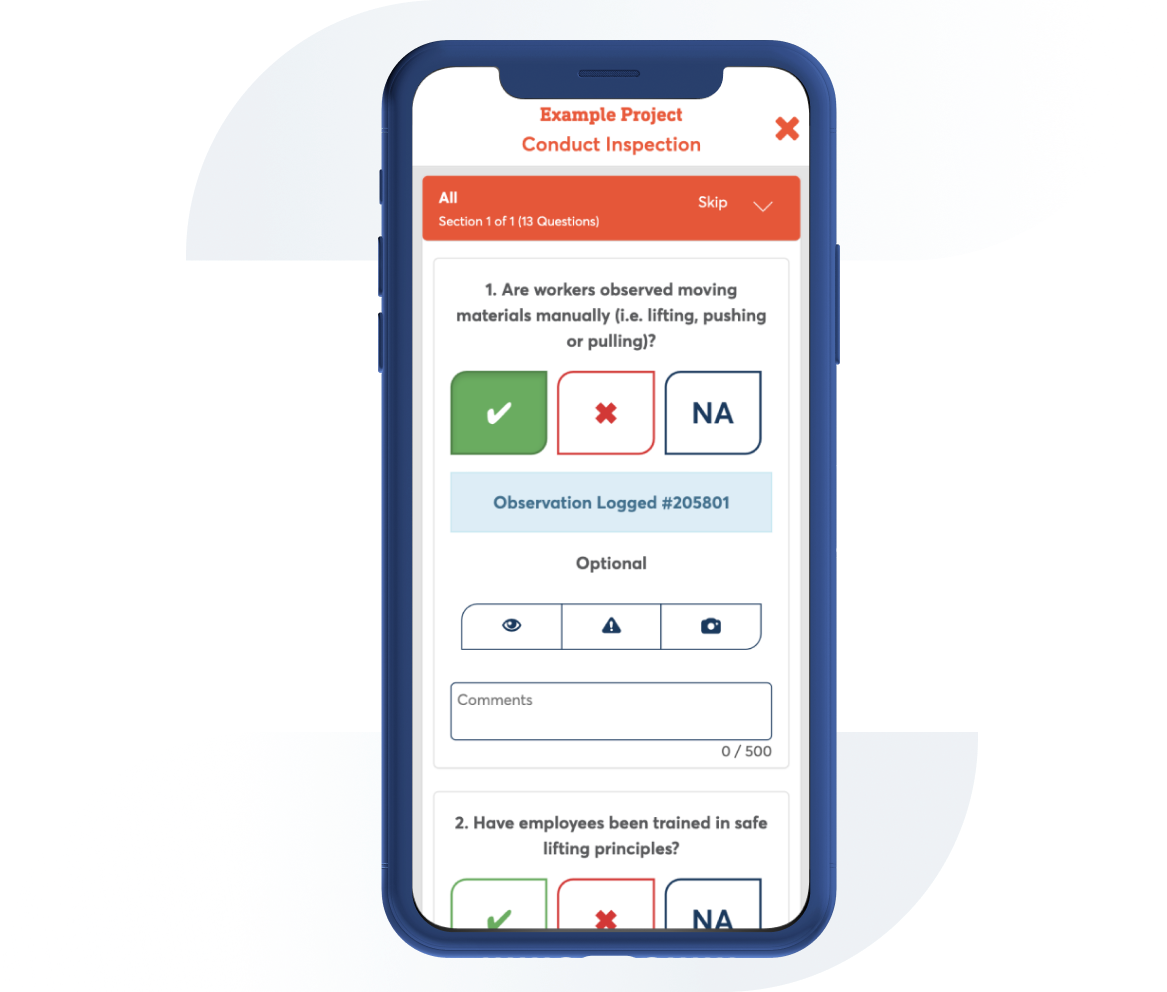Electrical Safety Checklist in Mines
Contributor: Safesite Jurisdiction: USA Federal MSHA
Based on MSHA guidelines, this checklist can be used to ensure equipment is safe and in working order, back-up power sources are in place and mine workers are wearing appropriate safety gear for electrical exposure.

Template Preview
1. Is electrical equipment, including electrical wires and cables, power distribution systems, plugs and cords, approved for use in mines?
Actions
2. Are flexible cords used only in continuous lengths without splices or taps?
Actions
3. Does the mine have a back-up electrical power source for critical support systems, to ensure they keep running even after the main power supply gets cut off?
Actions
4. Is all electrical equipment properly grounded, and portable GFCIs required to be used on portable electrical equipment?
Actions
5. Are all cord-connected, electrically-operated tools used by employees ground-tested and in good condition?
Actions
6. Is each type of disconnecting means (I.e. Circuit Breaker, knife switch, rtary disconnect, etc.) legibly marked to indicate its purpose unless it is located and arranged so that the purpose is evident?
Actions
7. Does the mine use bolted or restrained plugs and sockets to prevent system changes being made by unauthorized workers?
Actions
8. Are the existing Electrical Panel Directories and Equipment Disconnecting Means accurately labeled, legibly marked, and kept updated to indicate specific purpose?
Actions
9. Is sufficient access and working space (I.e. 36 inches) provided and maintained around electrical equipment allowed for safe operation and maintenance?
Actions
10. Is all facility electrical equipment marked with Manufacturer's name, trademark, or other descriptive marking by with it can be identified, including the voltage, current, wattage or other ratings?
Actions
11. Are energized parts of electrical equipment operating at 50 V or more guarded against accidental contact by use of approved cabinets or other forms of approved enclosures?
Actions
12. Is damaged or defective electrical equipment immediately isolated, taken out of service, and/or locked out until it can be safely repaired or replaced?
Actions
13. Are electricians and "Qualified Electrical Workers" trained in NFPA 70E safe work practices and authorized to work on specific equipment?
Actions
14. Does each employee who is exposed to the hazards of flames or electric arcs wear Arc Rated (AR/FR) apparel and PPE when working on or around exposed electrical conductors?
Actions
15. Are all electrical equipment and systems treated as energized until tested or otherwise proven to be de-energized?
Actions
16. Does the organization have a written Control of Hazardous Energy (LOTO) Program?
Actions
17. Do Authorized Workers who perform lockout-tagout have appropriate training?
Actions
18. Write Comments or Remarks here:

Can't find what you are looking for?
